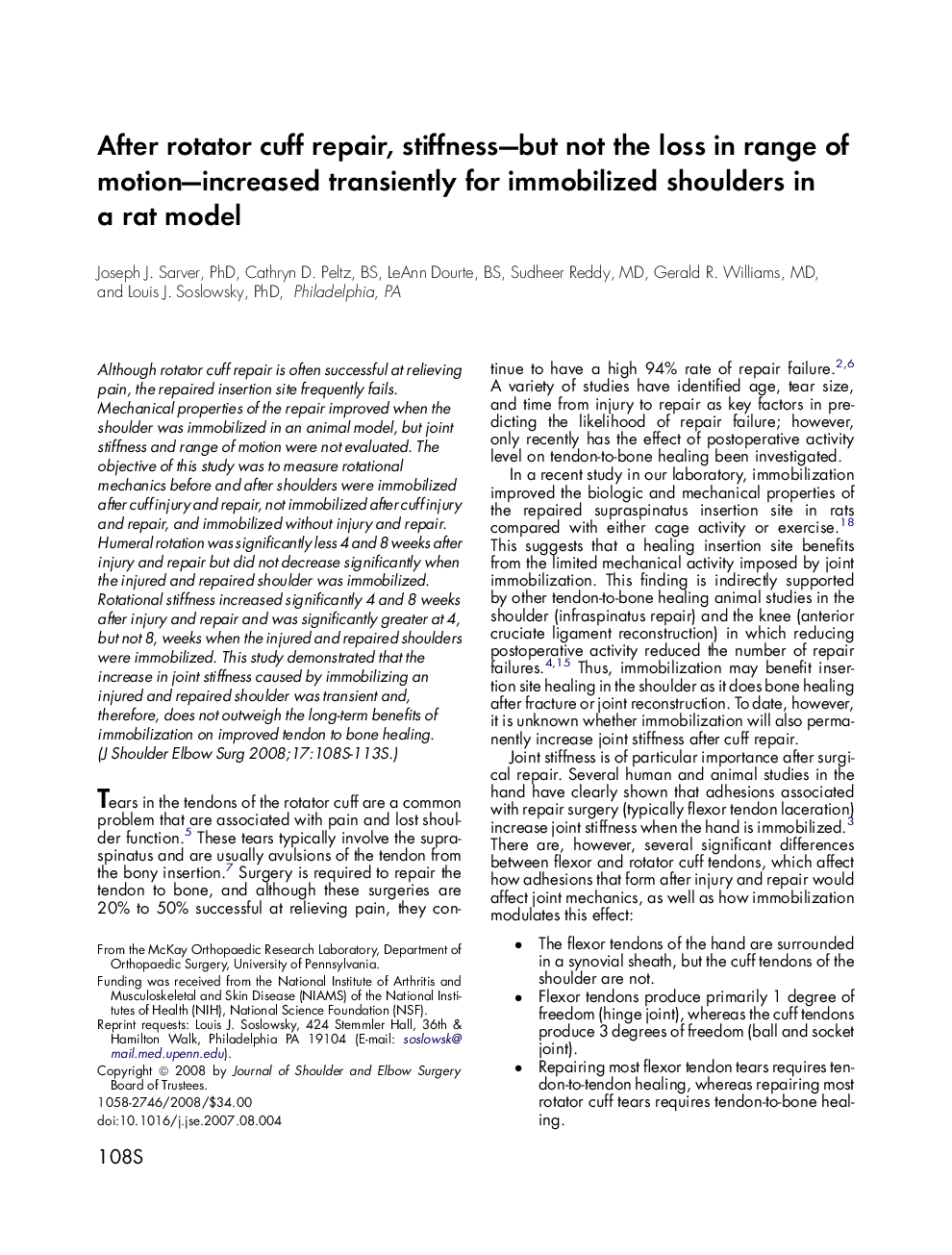| Article ID | Journal | Published Year | Pages | File Type |
|---|---|---|---|---|
| 4075596 | Journal of Shoulder and Elbow Surgery | 2008 | 6 Pages |
Although rotator cuff repair is often successful at relieving pain, the repaired insertion site frequently fails. Mechanical properties of the repair improved when the shoulder was immobilized in an animal model, but joint stiffness and range of motion were not evaluated. The objective of this study was to measure rotational mechanics before and after shoulders were immobilized after cuff injury and repair, not immobilized after cuff injury and repair, and immobilized without injury and repair. Humeral rotation was significantly less 4 and 8 weeks after injury and repair but did not decrease significantly when the injured and repaired shoulder was immobilized. Rotational stiffness increased significantly 4 and 8 weeks after injury and repair and was significantly greater at 4, but not 8, weeks when the injured and repaired shoulders were immobilized. This study demonstrated that the increase in joint stiffness caused by immobilizing an injured and repaired shoulder was transient and, therefore, does not outweigh the long-term benefits of immobilization on improved tendon to bone healing.
